Mushrooms have been a fascination for humans since ancient times, captivating us with their intriguing shapes, vibrant colors, and unique properties. As one explores the vast world of mushrooms, a peculiar group catches attention – the mushrooms with pores.
Unlike their smooth-capped counterparts, these fungi possess tiny openings on the underside of their caps known as pores. These mushroom species belong to various families and can be found in diverse ecosystems worldwide.
In this article, we delve into the enchanting realm of mushrooms with pores, exploring their distinct characteristics, ecological roles, and potential benefits for humans.
List of Mushrooms with Pores
1. Scarletina Bolete
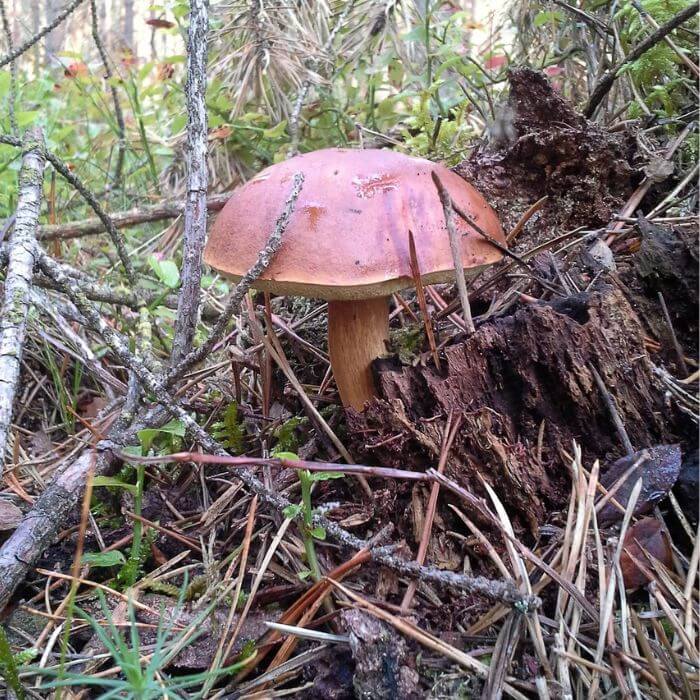
The scarletina bolete (Neoboletus praestigator) is a striking mushroom species known for its orange-red pores. It belongs to the family Boletaceae and can be found across North America, especially California.
This mushroom typically grows in mycorrhizal association with various tree species such as oak or spruce.
One of the distinctive features of the scarletina bolete is its beautiful coloration. The cap ranges from dull red to brown and can reach diameters of up to 8 inches. As it matures, the cap may fade slightly and develop small cracks or wrinkles.
The stipe of this mushroom is cylindrical, often tapering towards the base. It has a yellowish color with reddish hues and can measure anywhere between 1.7-4.5 inches in height.
When cut, this mushroom stains blue or black. Scarletina boletes are edible and needs longer cooking compared to other edible mushrooms.
2. Hen of the Woods
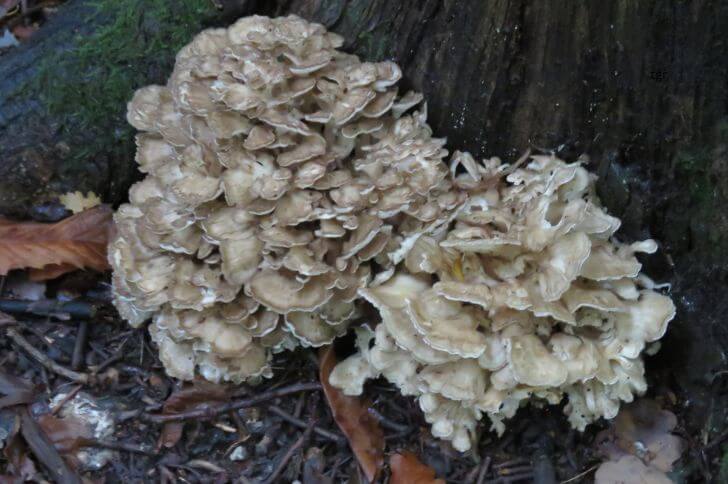
Grifola frondosa, colloquially called the hen of the woods or maitake, is a species of mushroom belonging to the family Meripilaceae.
This fascinating fungus is easily recognizable by its large, fan-shaped fruiting bodies that resemble the feathers of a nesting bird. Found primarily in temperate regions of Asia, Europe, and North America, hen of the woods grows at the base of trees, particularly oaks.
One striking feature is its unique growth pattern. The mushroom forms clusters with multiple overlapping caps that can reach impressive sizes. These clusters can weigh several pounds and have been known to span up to three feet in diameter!
Moreover, unlike many other mushrooms that have gills on their undersides, it has tiny pores from which it releases its spores.
Not only does Grifola frondosa possess an intriguing appearance, but it also holds significant culinary value. With a rich umami flavor reminiscent of roasted chicken or earthy spices like cinnamon and nutmeg, this mushroom has become highly sought after by chefs around the world.
3. Turkey Tail Mushrooms
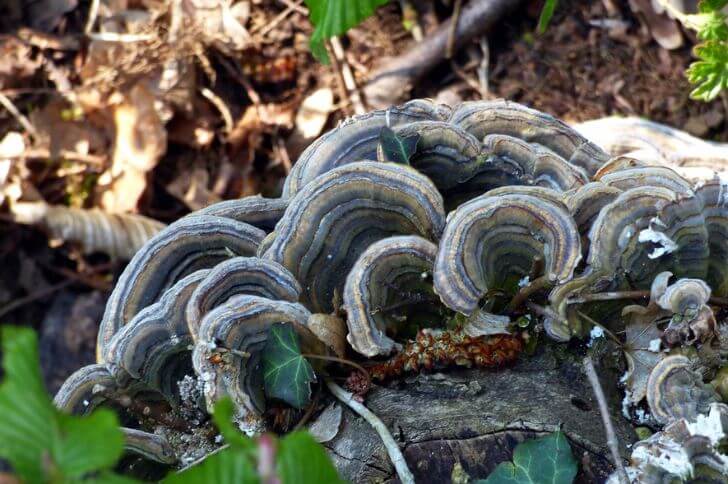
Turkey tail mushrooms belong to the Polyporaceae family. These mushrooms are widely recognized for their unique appearance, resembling the colorful feathers of a wild turkey’s tail, hence their name.
Turkey tail mushrooms grow in various habitats worldwide and can be found on dead or decaying hardwood logs and stumps. They are classified as saprophytic fungi, meaning they obtain nutrients by breaking down organic matter.
Another distinctive feature of these mushrooms with pores is their fan-shaped fruiting bodies, which usually measure about 1-4 inches in diameter. The upper surface of the caps displays concentric zones with different colors ranging from brown, beige, white, gray to greenish-blue hues.
The underside of these mushrooms is covered in tiny pores instead of gills like many other mushroom species. These pores release spores into the surrounding environment for reproduction.
In addition to their striking appearance and ecological role in decomposition processes, turkey tail mushrooms have gained attention for their potential benefits. They contain various bioactive compounds such as polysaccharides and phenols that possess immunomodulatory properties.
4. Pheasant Back Mushrooms
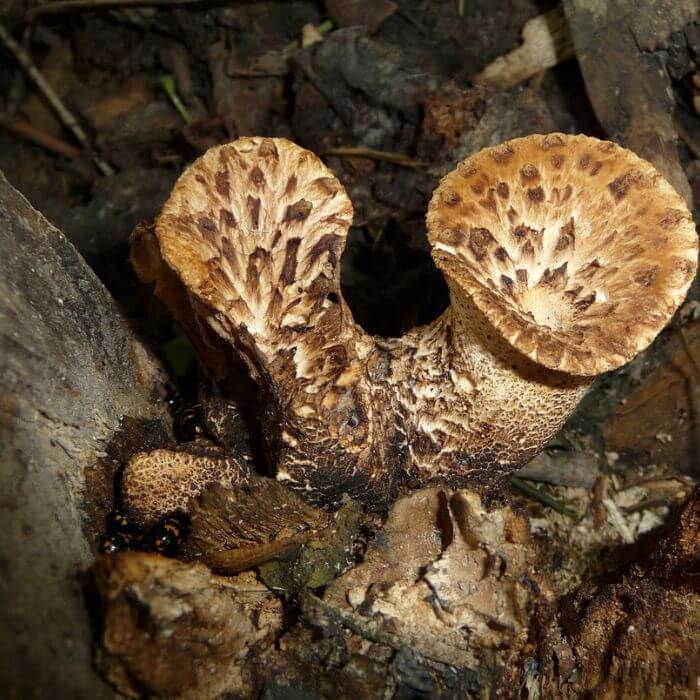
Another member of the polyporaceae family with pores is the pheasant back mushroom.. These mushrooms are characterized by their distinct appearance and texture, resembling the feathers of a pheasant or the saddle of a horse.
Pheasant back mushrooms can be easily recognized by their large size, reaching up to 15 inches in diameter, and their light brown or tan color with dark scales on top.
Another interesting feature of pheasant back mushrooms is their porous underside. Unlike gilled mushrooms that have spore-producing gills on the underside of their caps, these mushrooms have tiny pores where they release their spores.
These pores act as small openings through which the mushroom disperses its reproductive cells into the environment.
Due to their porous nature, pheasant back mushrooms can absorb water easily and become quite spongy when wet. And, this characteristic also makes them less desirable for culinary purposes compared to other mushroom varieties.
While some people enjoy harvesting and cooking these wild mushrooms for their earthy flavor and meaty texture when young and tender, others find them tough or bitter when matured.
Related Read: Check different gilled mushrooms
5. Chicken of the Woods
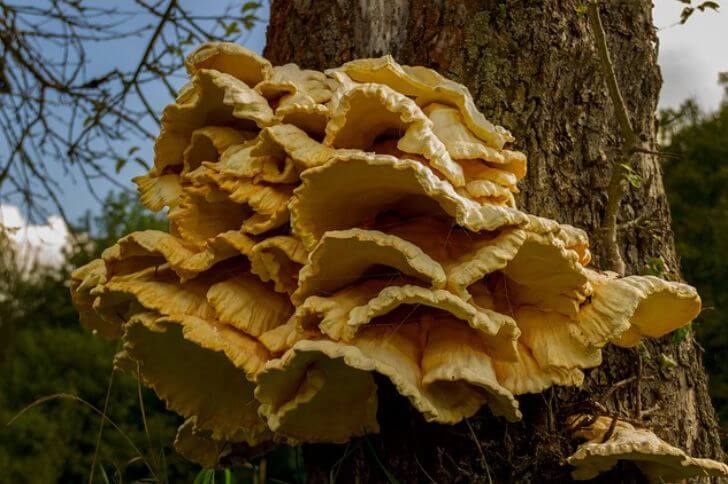
Scientifically called Laetiporus sulphureus, the chicken of the woods is a fascinating mushroom species that belongs to the polypore family. It gets its peculiar name from its unique taste, which is similar to cooked chicken.
This wild edible mushroom can be found growing on decaying trees, particularly oak and chestnut, during late spring to early fall.
You can identify the chicken of the woods by its vibrant coloration. The young fruiting bodies boast striking orange or yellowish-orange hues that gradually fade with age.
Another notable feature is their lack of gills; instead, they possess tiny pores on their undersides where spores are released. These mushrooms grow in large brackets or shelves with overlapping layers that can reach impressive sizes – some specimens have been reported to weigh over 100 pounds!
Chicken of the woods has gained popularity due to its delectable taste and meaty texture. It has a distinct flavor reminiscent of chicken, lending itself well to various culinary applications such as stews, stir-fries, and even vegetarian “chicken” dishes.
6. Reishi Mushrooms
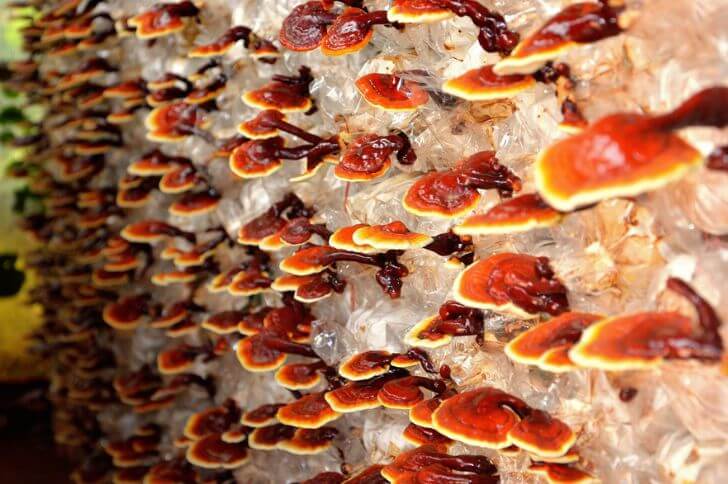
The reishi mushroom is another mushroom that fits this list. Unlike mushrooms with gills, reishi mushrooms have pores on the underside of their caps instead. These unique mushrooms have been highly regarded for centuries in traditional Chinese due to their numerous benefits.
The use of reishi mushrooms dates back over 2,000 years in East Asia.
7. Porcini Mushroom
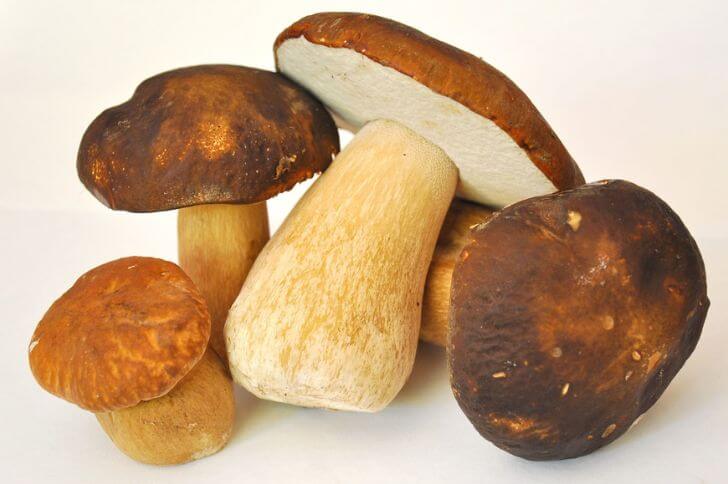
Porcini mushrooms are a popular and highly sought-after variety of edible fungi that belong to the Boletus genus. Known for their distinctive appearance and earthy flavor, these fungi have a unique characteristic that sets them apart from other mushrooms – they have pores on the underside of their caps instead of gills.
These pores, which resemble tiny holes, release spores that aid in the reproduction process.
Another coveted feature of these mushrooms with pores is their rich and intense umami flavor. This savory taste makes them a favorite among mushroomers, as they add depth and complexity to various dishes.
Porcini mushrooms are commonly used in Italian cuisine, where they lend their exquisite flavors to soups, risottos, pastas, and sauces.
8. Ruby Bolete
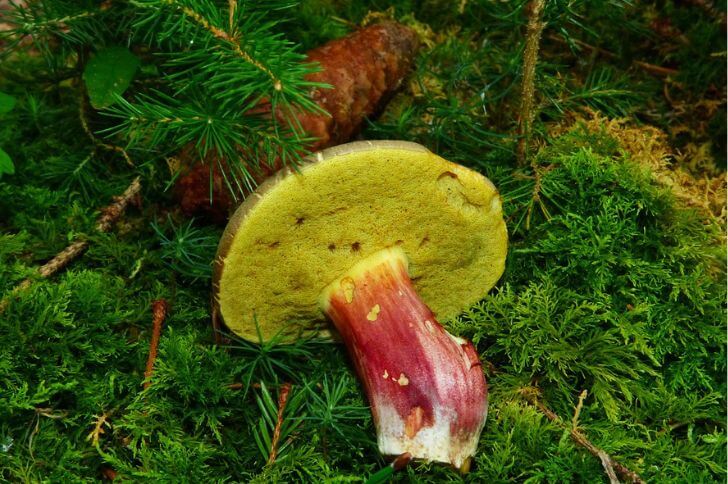
Ruby boletes belong to the Boletus family. It is renowned for its stunning ruby red cap, which can reach up to 2.8 inches in diameter. This brilliant coloration makes it easily distinguishable from other boletes and adds a touch of vibrancy to any forest floor where it grows.
Like the other mushrooms on this list, the ruby bolete has sponge-like pores on the underside of its cap instead of gills. These pores are tightly packed and release spores, allowing the mushroom to reproduce. The presence of these pores also aids in identifying this species as a true bolete.
In terms of habitat, this mushroom with pores is commonly found growing under coniferous trees such as oaks. It prefers moist environments with rich organic matter in the soil, often appearing during late summer and early fall.
Despite its striking appearance, this mushroom is not considered highly sought-after for culinary purposes due to its soapy taste and relatively slimy texture when cooked. It also attracts maggots.
9. Umbrella Polypore
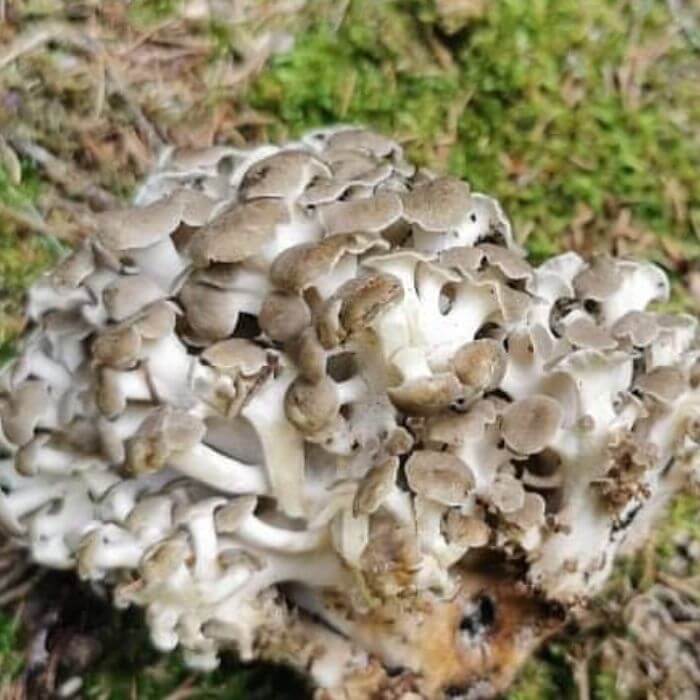
source:pilzsammelprofi_und_angler_
Often found around beeches, the umbrella polypore or Polyporus umbellatus, is a fascinating mushroom species from the family Polyporaceae. This mushroom is characterized by hundreds of caps lumping together to form one large fruiting body, which gives them their common name.
Another way to identify umbrella polypores is by their pore surface. Instead gills have small pores underneath the cap where spores are produced. These tiny openings allow for the release of countless microscopic spores into the environment, aiding in their reproduction.
10. Giant Polypore
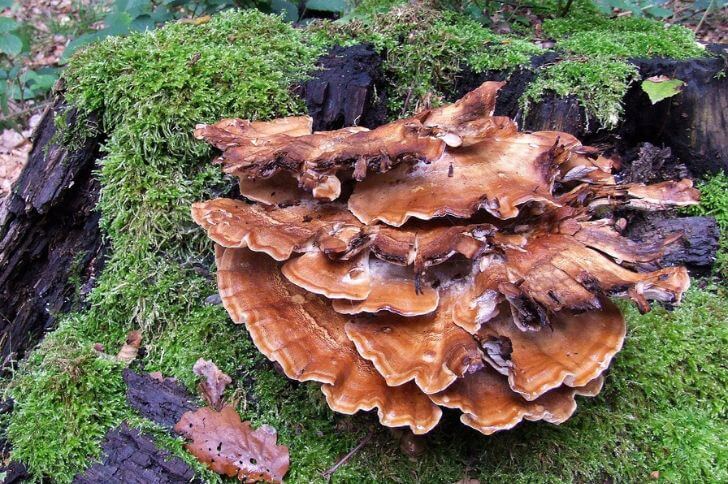
Giant polypore, also known as Meripilus giganteus, is a large and impressive mushroom that belongs to the family Meripilaceae. It can be found growing on the stumps or trunks of various deciduous trees.
This massive fungus can reach sizes of up to one meter in diameter, making it one of the largest polypores in existence.
The giant polypore has a distinct fruiting body that consists of overlapping brackets with a smooth upper surface.
Its color ranges from creamy white when young to yellow-brown or reddish-brown as it matures. Another fascinating characteristic is its thick flesh and dense pores located underneath its cap. These pores serve as the reproductive structures through which spores are released into the environment.
Due to its size and appearance, the giant polypore is often mistaken for other bracket fungi such as hen-of-the-woods or artist’s conk . However, an experienced mycologist can easily differentiate between them by observing specific features like pore size and shape.
In terms of culinary uses, giant polypore is not commonly consumed due to its tough texture and somewhat bitter taste. Nevertheless, it plays a crucial role in nature by decomposing dead wood and recycling nutrients back into ecosystems where it thrives.
11. Dyer’s Polypore
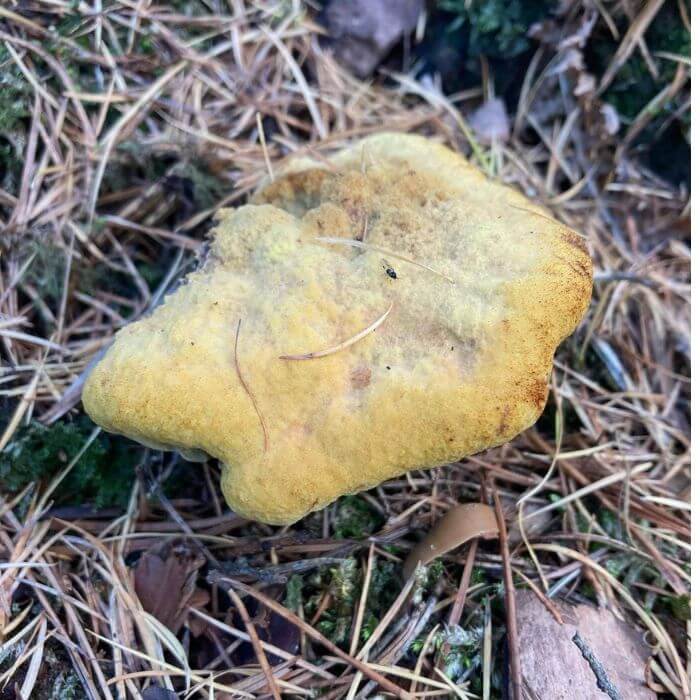
source: themossimp
Dyer’s polypore is another bracket fungi that fits in this list perfectly. As its name suggests, this mushroom holds great significance for those interested in natural dyes and traditional dyeing techniques.
The fruiting bodies of dyer’s polypore are large and conspicuous, often growing on the trunks or stumps of hardwood trees. They have a distinct shelf-like appearance with a vibrant orange-brown coloration that intensifies as they mature.
What makes dyer’s polypore particularly intriguing is its ability to produce a wide range of colors when used as a natural dye. Historically, indigenous peoples and early settlers in North America utilized this mushroom extensively for coloring materials such as wool, leather, and baskets.
The pigments derived from dyer’s polypore can yield shades ranging from rich yellows and oranges to earthy browns and even deep greens when combined with other substances like iron or alum mordants.
Today, dyers and fiber artists continue to explore the potential of using this mushroom with pores for natural dyeing purposes. Its popularity stems not only from its beautiful colors but also due to its abundance in certain regions.
12. Beefsteak Mushroom
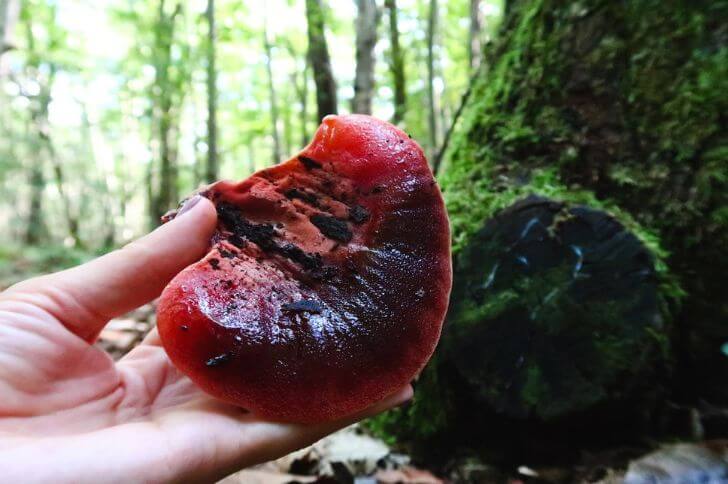
Beefsteak mushrooms, scientific name Fistulina hepatica, are a type of edible mushroom that belongs to the fungal family Fistulinaceae. These unique mushrooms are easily recognizable due to their vibrant red color and fleshy texture.
They are commonly found growing on the trunks of living or dead trees, especially oak trees. With a distinct beef-like taste and texture, these mushrooms have gained popularity among foragers and chefs alike.
One remarkable feature of beefsteak mushrooms is their appearance. They often resemble a piece of raw meat due to their reddish-brown coloration and irregular shape.
The mushroom’s cap can grow up to 15 inches in diameter, making it one of the largest pore-bearing fungi in North America and Europe. The pores on the underside of the cap release spores used for reproduction, distinguishing them from gilled mushrooms.
When it comes to culinary uses, beefsteak mushrooms offer a robust flavor that compliments various dishes. Due to their firm texture even after cooking, they are often used as a meat substitute in vegetarian recipes or served alongside meats as an accompaniment.
Their savory taste pairs well with ingredients like garlic, herbs, and butter when sautéed or roasted.
Conclusion:
Mushrooms with pores are a fascinating group of fungi that play important roles in the ecosystem. Their unique structure and function allow them to efficiently release spores for reproduction and to acquire nutrients from their surroundings.
These mushrooms can be found in various habitats worldwide, from forests to grasslands, and they come in a wide range of shapes, sizes, and colors. While some species are edible and prized for their culinary value, others shouldn’t be consumed. Therefore, it is crucial for mushroom enthusiasts to have a deep understanding of these organisms before attempting to identify or consume them.
Hi There,
My name is Jenny. I’m the Chief Editor at Try Green Recipes and besides making yummy and healthy foods for my kids, grandkids, and friends. I’m new to the blogging world but I believe what I have to share is unique and will bring joy to your home. If you are adventurous and want try something tasty, let’s get started.

